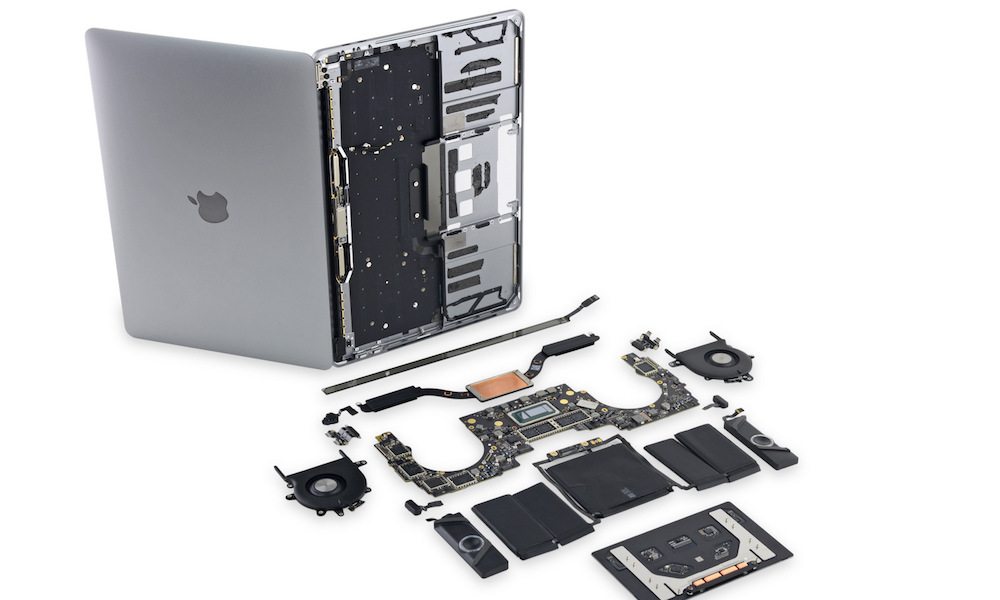Teardown of Apple’s New 13-inch MacBook Pros Reveal Intriguing Details

Toggle Dark Mode
The prying, investigative hands over at iFixIt recently had time sit down and tear apart both variants of Apple’s late 2016, 13-inch MacBook Pro including the standard model sans Apple’s new OLED Touch Bar, as well as the upgraded, Touch Bar-equipped model.
What’s most interesting about this super-epic teardown, iFixIt revealed that the powerful new speaker system housed within Apple’s 2016 MacBook Pro is not located directly underneath the physical speaker grille cut outs on the machine, but rather, the audio output appears to project from underneath the chassis, gaining bass as the sound reflects off of the air vents and other underbody components, according to MacRumors. In other words, the speaker grilles ornamenting your new 13-inch MacBook Pro with OLED Touch Bar don’t actually house the speakers within them — they’re basically there for aesthetics.
In another bizarre finding, it was revealed that the internal components in Apple’s latest MacBook Pro with OLED Touch Bar appear markedly reconfigured in relation to its Touch Bar-less counterpart. What’s more, primarily in light of this apparent reconfiguration of internal components, Apple’s 13-inch MacBook Pro with OLED Touch Bar has been rendered non-user upgradeable.
Although, strangely enough, the same, 13-inch MacBook Pro without Apple’s OLED Touch Bar is not limited by these newly discovered structural differences. As such, Apple’s new 13-inch MacBook Pro with OLED Touch Bar received a paltry score of 1/10 on iFixIt’s “repairability” scale — provided for customers to determine the ease of either repairing or upgrading their unit with different after-market components.
Last but not least, iFixIt learned in its teardown of Apple’s 13-inch MacBook Pro with OLED Touch Bar that, due to the reconfiguration and compression of internal components, fixing, or physically replacing, a faulty power switch might be an impossible feat — and attempting to do so, in the event of necessity, may require fully replacing the machine’s main logic board.
As the iFixIt report notes, the power button on Apple’s new MacBook Pro with OLED Touch Bar features the company’s T1 chip and Touch ID sensor built right into the same panel, and that panel is essentially soldered onto the main logic board, tied down by a myriad of fibers and filaments to help power the Touch Bar. Why Apple opted for such a complex design remains unclear, but we can conclude that the unique configuration was necessary to stuff such complex internals into an undeniably thin machine.






